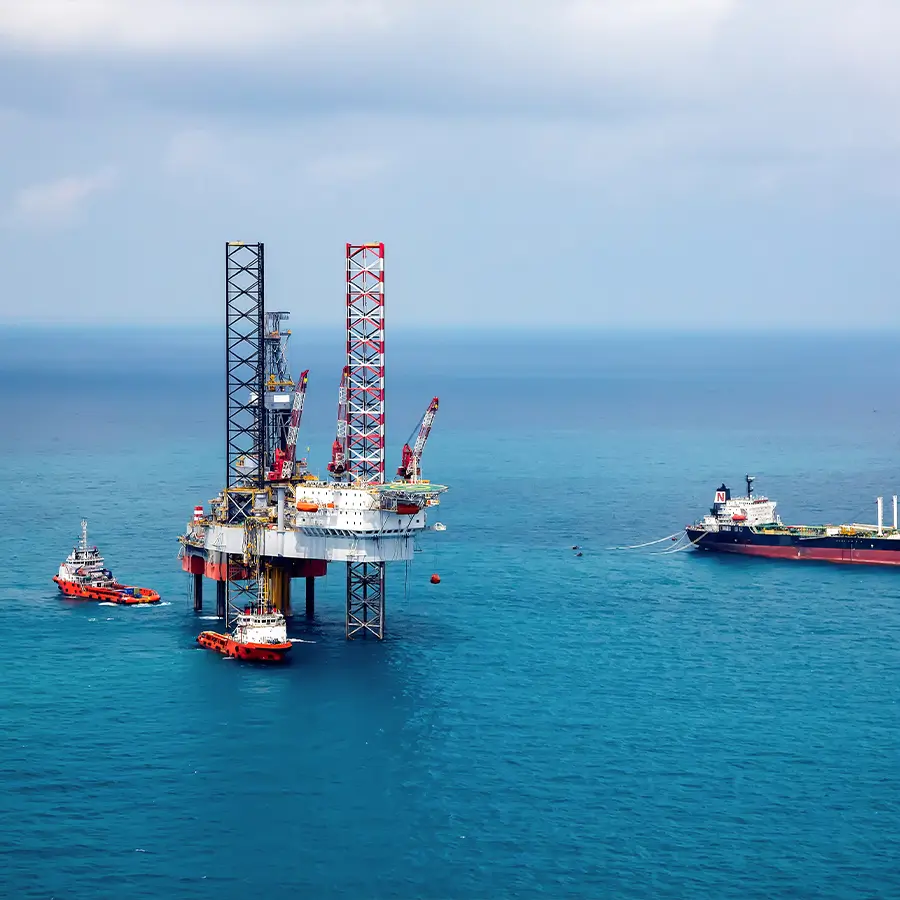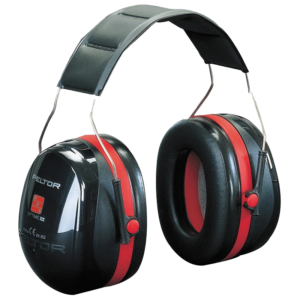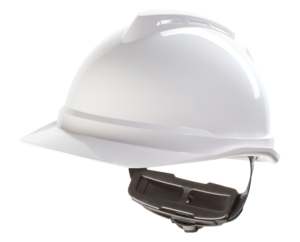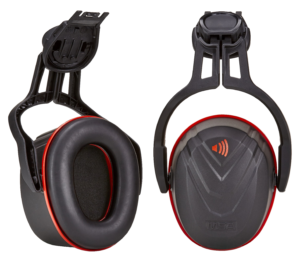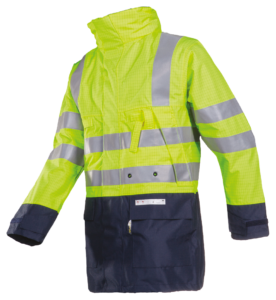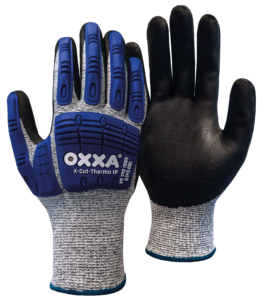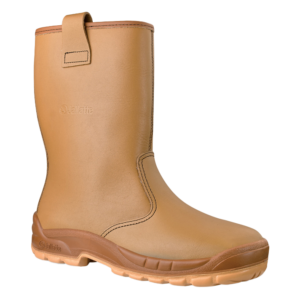Knowledge base
Protection against noise & weather conditions
Noise pollution
When is noise harmful?
The degree of damage from noise depends on several factors, such as the intensity of the noise, the duration of exposure and personal sensitivity. The limit value (legal standard) is 80 dB(A) at an exposure of 8 hours per day. As an employer, it is essential to provide hearing protective equipment at this level. When exposed to noise levels above 85 dB(A) for extended periods of time, employees may suffer hearing damage. In these cases, the employer should take technical and organizational measures, such as clearly marking workplaces with pictograms indicating that wearing hearing protection is mandatory. Short-term exposure to noise levels above 120 dB(A) can cause immediate damage, such as hearing loss or tinnitus (ringing in the ears). It is important, however, to strike a balance between protecting against harmful noise and being able to hear important sound signals such as fire alarms. Too much noise protection can cause you to miss these signals and compromise your safety.
What is dB(A)?
dB(A) is a unit of measurement for sound levels, where the “A” stands for “A-weighted.” This system applies a weight to the sound level depending on frequency to better match the sensitivity of human hearing. This system takes into account that human hearing perceives different frequencies differently. dB(A) is often used in workplace noise measurements because it better matches how people experience sound. Below is a table showing the maximum exposure time at a given sound pressure level without being harmful.
Noise level (in dB(A)) | Maximum time |
80 dB(A) | 8 hours |
83 dB(A) | 4 hours |
90 dB(A) | 48 minutes |
100 dB(A) | 5 minutes |
110 dB(A) | 30 seconds |
What is SNR rating?
SNR is a Single Number Rating, a system defined by the International Organization for Standardization (ISO) standard ISO 4869.
Independent laboratories test hearing protection to determine the SNR value, which can be used to compare different hearing protectors for noise reduction. To determine the sound pressure at your ear, you subtract the SNR number from the average measured sound level. This is explained below with some examples.
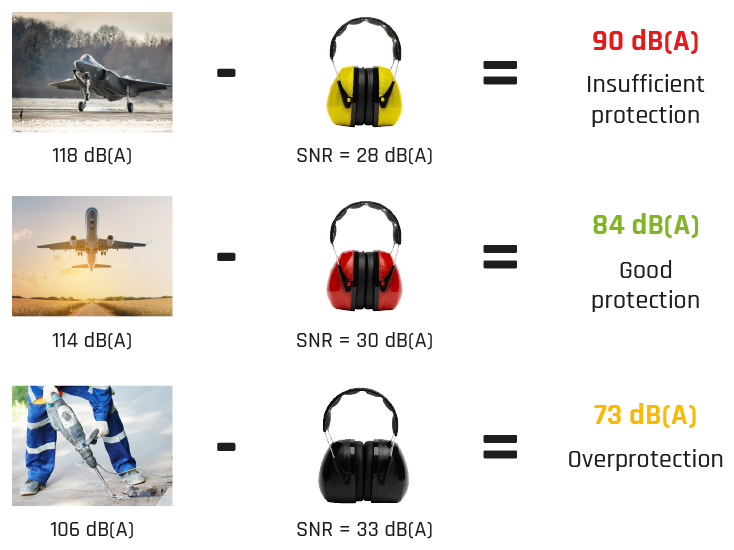
A higher SNR value indicates that a hearing protector attenuates more, but it is important to note that the SNR is a rough estimate. Hearing protectors attenuate low and high tones differently, which is why the H, M and L values are needed to compare attenuation at different frequencies.
H: High frequencies between 2000 and 8000 Hz
M: Medium frequencies between 1000 and 2000 Hz
L: Low frequencies between 63 and 1000 Hz
Noise levels at offshore sites and ships pose a significant risk to workers, especially during activities such as oil and gas extraction, construction work and shipping. Noise sources can range from machinery and generators to helicopters and ships, which can lead to hearing damage. Hearing protection, such as earplugs or hearing protectors, is therefore crucial to protect workers’ hearing.
Our recommendations
3M H540A ear muff with headband | MSA V-Gard 500 unventilated safety helmet | MSA V-Gard HIGH ear muff with helmet attachment |
|
|
|
Art. No.: 3.19.010.10 | Art. No.: 6.16.867.00 | Art. No.: 3.17.132.00 |
Weather conditions
Weather conditions at offshore sites and ships have a direct impact on worker safety. Wind, waves, rain, fog and limited visibility affect their daily activities and safety. Protective clothing, including waterproof clothing, thermal protection and good visibility is necessary to protect workers from these elements.
Would you like to learn more about working with (winter) weather conditions, explaining the various standards that matter with PPE. Then click here.
Our recommendations
Sioen 3073 Winseler parka | OXXA® X-Cut-Thermo IP 51-805 | Jallate Jalartic safety boot S3 |
|
|
|
Art. No.: 2.42.545.00 | Art. No.: 1.51.805.00 | Art. No.: 5.76.050.00 |
Need help?
Want advice or additional information on the right products when working in Noisy conditions? Contact us today on T. +31 (0)181 47 50 00. Our enthusiastic team will be happy to tell you more!
